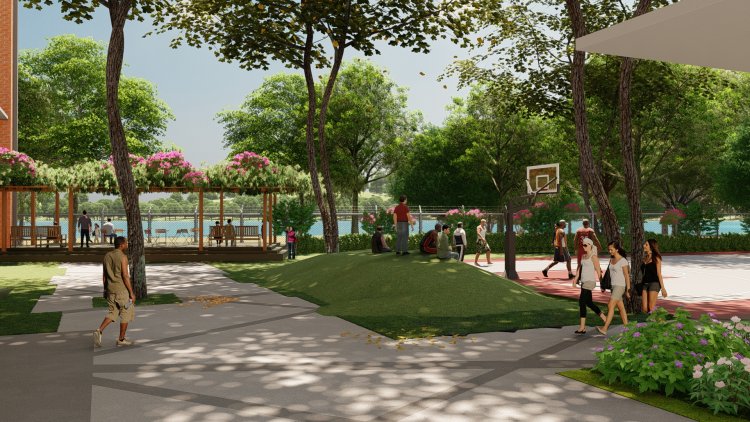IIT Bombay Student Housing
The Indian Institute of Technology, Bombay, is one of the country’s most esteemed technical and research universities. The 545-acre campus is located along the banks of the Powai Lake in East Mumbai. The campus enjoys abundant green cover due to its proximity to the Sanjay Gandhi National Park.


The Indian Institute of Technology, Bombay, is one of the country’s most esteemed technical and research universities. The 545-acre campus is located along the banks of the Powai Lake in East Mumbai. The campus enjoys abundant green cover due to its proximity to the Sanjay Gandhi National Park.
The IITBAA (IIT Bombay Alumni Association) called for the redevelopment of the student housing blocks -- H7, H8 (boys’ hostel) and H21 (girls’ hostel) -- in order to increase the capacity of the existing blocks. Additionally, the design brief entailed the buildings to be Carbon-Zero and GRIHA qualified.

Research shows that humans have an innate affinity with the natural world –– a concept known as biophilia –– and that the presence or absence of the elements of nature within our homes, offices, or schools, has a direct and measurable impact on our health and wellbeing. Therefore, IMK Architects’ vision for the hostel aims to create a holistic environment which is in harmony with the natural context.

IMK Architects’ proposal for the student housing retains the footprint of the original blocks to preserve the existing trees on site. Internally, the rooms are arranged along a 2-metre wide singly loaded corridor that looks outwards --- a design strategy that not only cuts down on operational costs and maintenance but is also paramount to increase circulation of natural air, thereby reducing the possibility of cross-infection and contamination. At the top of each block is a vast, triple-heighted “sky lounge”, which has been provided as a shared space for recreation. The sky lounges offer splendid views of the Powai Lake and its surroundings.

A network of nine landscaped courtyards run between the three blocks, creating a street-like configuration that ultimately leads to a viewing deck at the edge of the Powai Lake. These shaded courtyards function as spill-out spaces for learning, recreation, events, and other collaborative activities. Additionally, such open spaces create identifiable pockets, fostering a sense of belonging among the students.

The proposal calls for the use of sun-dried CSEB (Compressed Stabilised Earth Bricks) that can be manufactured on-site using locally-available materials, thereby reducing carbon emissions and transportation costs significantly.




